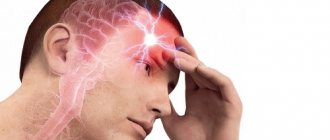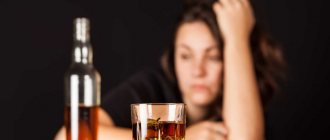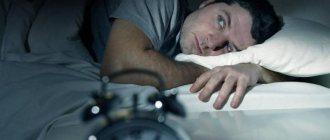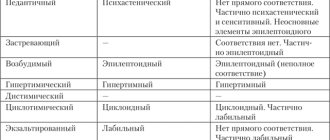Every woman throughout her life repeatedly encounters a prejudiced attitude towards changes in her condition. Physical ailments and health problems are attributed to characteristics of the “weaker sex”; sudden mood swings are at best PMS, or even typical female hysteria.
It is more difficult for a woman than for a man to take seriously seemingly insignificant symptoms: nervousness of the heart and shortness of breath, anxiety and irritability, sensitivity to emotional downturns and the psychosomatic expression of anxiety in the form of migraines, pressure changes and dizziness.
Neither female hormones nor innate emotionality have anything to do with it. Most often, these “minor little things” are a sign of VSD, a disease that currently affects more than half of the world’s population, regardless of age and gender. What is vegetative-vascular dystonia and how is it dangerous? Symptoms and treatment in women may differ in some ways from children, adolescents and men, as well as its course.
Symptoms of vegetative-vascular dystonia in women
If you are subject to hormonal changes, cannot climb to the third floor without shortness of breath, suffer from insomnia, or grab Validol in every nervous situation - this does not fit into the “norm” of women’s health.
Symptoms of VSD in women manifest themselves in various everyday situations. So, you may be caught:
- attacks of anxiety, panic, irritability, depression or apathy;
- frequent mood swings, unmotivated emotional outbursts;
- feeling of lack of air, shortness of breath during physical and/or psychological stress, suffocation during sleep;
- insomnia, panic attacks, feeling weak and lethargic in the morning;
- tremor, weakness, numbness of extremities, dizziness, tinnitus;
- unexpected pain in the heart and “shots” in the sternum, migraines.
In addition, accompanying factors may include previously atypical allergic reactions and rashes, eating and genitourinary disorders, and conditions close to neurosis. As a rule, the symptoms of VSD are not isolated, but appear complexly in several expressions.
Causes
In order for an imbalance of hormones to occur in the body and an imbalance between the phases of sleep and wakefulness, mental activity and intellectual rest, physical activity and the absence of any physical activity to occur, a woman’s body must be regularly exposed to certain factors, including:
- Stress. Constant nervous tension leads to a decrease in the body's barrier properties and easier susceptibility to the development of infections. By destabilizing the nervous system, the stimulus disrupts adaptation mechanisms. If this process is accompanied by insufficient or poor-quality nutrition, overwork, there is a high risk of developing the disease.
- Hypodynamic lifestyle. Reduced physical activity, as well as the need to remain in a sitting position for a long time.
- A hormonal imbalance that occurs in a woman’s body during puberty, pregnancy, or menopausal changes.
- Female psychotype: VSD often affects young women with excessive impressionability.
- Genetic predisposition.
- Neurological disorders of chronic course.
- Suffered traumatic brain injuries.
- Congenital pathological changes in the nervous, endocrine system, structure of the heart and blood vessels.
- Bad habits in which toxic substances interfere with the normal functioning of the heart and change the walls of blood vessels.
- Excess weight.
Dystonia often occurs some time after therapy for infectious diseases.
Diagnostics
If a number of such symptoms bother you, disrupt your usual routine, interfere with a harmonious family environment or your ability to work, you should not delay diagnosis. Consultation with a doctor is mandatory, since advanced vegetative-vascular dystonia can become an impetus for the development of more serious diseases of the cardiovascular system, respiratory tract, and internal organs.
Signs of dystonia and reasons to consult a therapist may include sleep disturbances, digestion problems, and vascular problems. If, in addition to this, you are concerned about pain in the heart area, you should do a cardiogram and consult a cardiologist.
The causes of the development of dystonia may be previously neglected congenital pathologies, and the specific manifestations of each problem require assessment by an appropriate specialist. The therapist may advise contacting a neurologist, psychiatrist or endocrinologist to get a more complete picture of the patient’s health status.
It is extremely important to identify the original cause that became the catalyst for the manifestations of VSD. Sometimes its symptoms can be mistaken for another disease that affects various organs and systems, and then improper treatment can only aggravate the situation.
General signs of VSD
VSD, symptoms in women over 40 years of age, in which they may differ slightly from other ages or from men, has a common feature - fluctuations and surges in blood pressure.
In general, the symptoms accompanying dystonia are so diverse that they may also be characteristic of other diseases, which is why difficulties often arise in making a diagnosis. Conventionally, all manifestations associated with this disease can be divided into groups, depending on which of the body systems turned out to be the most vulnerable.
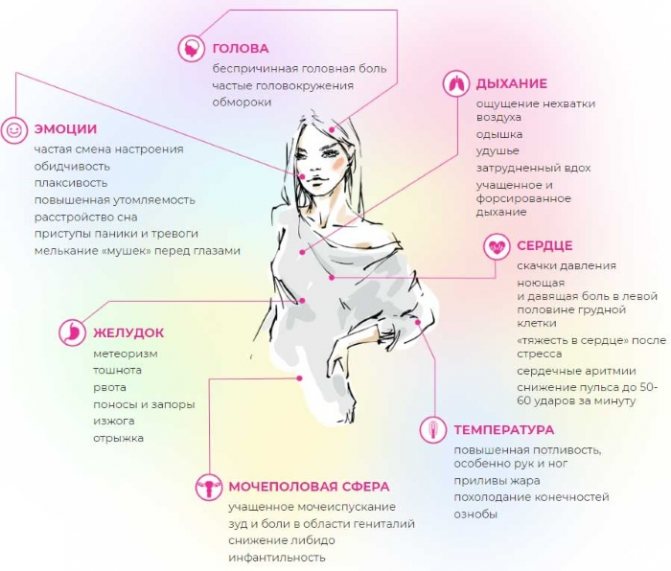
| The cardiovascular system |
|
| Respiratory system |
|
| Integumentary (skin) system |
|
| Thermoregulatory system |
|
| Neurohumoral system |
|
| Gastrointestinal system |
|
| Genitourinary system |
|
| Psycho-emotional system |
|
There are 2 types of VSD:
- of the hypertensive type, when a person suffers from high blood pressure;
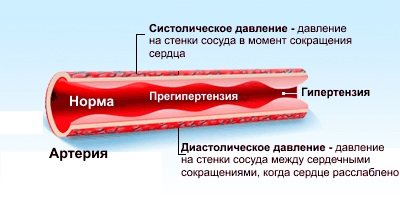
- hypotonic type, when problems are caused by unnaturally low blood pressure.
Treatment of vegetative-vascular dystonia in women
You can begin treatment for VSD only after a complete examination and prescription of an individual course by a therapist. Otherwise, it may not make any sense: if a woman does not know the exact reason that became the catalyst for the current state, there is no point in chopping off the heads of this hydra with a home hatchet - two new ones will grow in place of the old one.
In case of disturbances in the functioning of the heart and blood vessels, medications should be prescribed by the attending cardiologist. However, if the reason for the exacerbation of VSD symptoms is a stressful situation, prolonged depression or work overload, it is better to postpone drug treatment until initial psychotherapy.
When the psychological “pitfalls” that cause overstrain and disruption in the functioning of the autonomic system are found, they will (if the case is serious) be followed by a choice of which drugs to use to improve the condition. Usually the matter does not go beyond a course of sleeping pills and sedatives, which help with insomnia and panic attacks.
Medicines that stabilize heart rate and vascular tone are also popular, but it is worth remembering that self-medication can be dangerous. Particular attention should be paid to symptoms during pregnancy - after all, VSD as a pathology can be inherited. The treatment course should be drawn up taking into account the particular physical and psychological state of the patient’s health. Therapy for vegetative-vascular dystonia often includes regular visits to a psychologist over a certain period of time.
Features of the disease in women
The area of responsibility of the autonomic nervous system is to determine the stable and complete functioning of almost all organs combined into the systems of a woman’s body.
On this topic
- VSD
8 causes of cardiac dystonia
- Natalia Sergeevna Pershina
- June 9, 2020
The endocrine system, along with the cardiovascular system, is one of the most vulnerable in the event of its disturbances: first of all, the hormonal balance will suffer - its imbalance will arise, affecting the patient’s reproductive ability. Destabilized activity of the thyroid gland will be the root cause of an intermittent menstrual cycle.
During pregnancy, the signs of vegetative-vascular dystonia boil down to the fact that a woman experiences:
- Headache dizziness .
- Difficulty living in cramped spaces.
- Feeling of a rush of heat to the face with simultaneous chills and coldness of the extremities.
- Insomnia.
- General discomfort, neurological agitation.
- Unreasonable and inexplicable anxiety.
- Dryness of the nasopharyngeal mucosa.
- Sore throat.
- Nausea not associated with toxicosis.
- Vomiting, which almost always ends an attack of nausea.
- Flashing “flies” before the eyes – both against the background of an increased level of blood pressure, and under the condition of its normal level.
Also, a woman experiences difficulties and the inability to take a comfortable position, which is not associated with an increase in the volume of the abdomen.
When vegetative-vascular dystonia remains unattended by a specialist for a long time, a wide range of lesions occurs in the patient’s condition, expressed in the formation of hormonal imbalance. The first thing that attracts attention in this case is the disruption of the menstrual cycle and the deterioration of the woman’s general well-being during her period.
The main symptoms, along with pain and weakness, will be psycho-emotional instability and a change in the volume of blood released. The hands and feet become cold, the patient experiences dizziness, and it is difficult for her to remain in an upright position, which is not due to pain.
The disease also affects the musculoskeletal system: there is aching in the bones and joints, and there is a desire to take a forced position in order to improve well-being. During menstruation, diarrhea and severe dyspeptic syndrome develop – nausea, vomiting, lack of appetite.
This symptom complex should not be ignored - you need to visit a doctor and undergo an examination. It is also inadvisable to stop the most pronounced symptoms - pain, dizziness, nausea; in the future this will only complicate diagnosis.
Methods of treatment with folk remedies
Despite the fact that VSD is considered a medical diagnosis, many still decide to leave this problem within the family circle and solve the issue with folk remedies. With increased excitability, pressure changes and disorientation in stressful situations, many are treated with herbal teas, soothing tinctures, aromatic baths and massages.
Medicinal herbs, such as motherwort, valerian, hawthorn, can help relieve spasms, calm down and ease heart pain, but it is worth remembering that getting rid of VSD must be comprehensive. Herbs and decoctions should be supplemented with at least a balanced diet, moderate physical activity, and a corrected daily routine.
Speaking about physical therapy, it is recommended to try:
- yoga;
- stretching;
- swimming;
- dancing, etc.
On the contrary, it is advised to avoid strength exercises, since excessive fatigue can negatively affect the functioning of the cardiovascular system.
Doctors recommend sanatorium-resort treatment, but partially similar goals can be achieved at home. The patient is given rest, walking in the fresh air, and water procedures.
Treatment
Treatment methods for VSD are the same in men and women.
Treatment of vegetative-vascular dystonia can begin only after examination and exclusion of diseases with similar symptoms.
To treat VSD, depending on the severity of the syndrome, non-drug and drug therapy may be prescribed.
Non-drug therapy
Rest and sleep mode
For vegetative-vascular dystonia it is recommended:
- Sleep at least 8–9 hours at night in a sufficiently ventilated and cool room.
- Normal diet.
- Rest in quiet rooms with normal temperature conditions.
- Refusal of frequent business trips, irregular working hours, night shifts, long journeys or flights.
- Adequate physical and psycho-emotional stress.
- Minimizing stressful situations.
Physical education classes
Adequate and sufficient load on skeletal muscles has a positive effect on the condition of the nervous system, blood vessels and myocardium. That is why, in case of VSD, it is recommended to engage in physical exercise, which increases resistance to stress, adaptation to external factors and minimizes or eliminates signs of vegetative-vascular disorders.
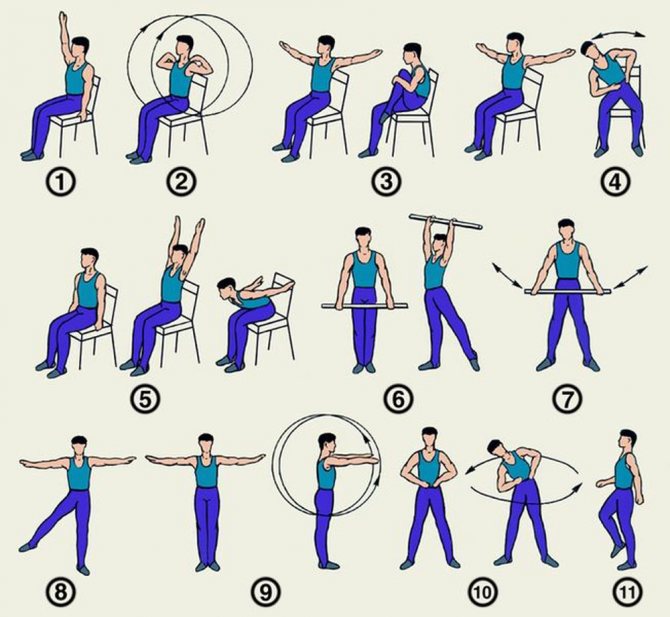
Physical exercise is an integral part of the fight against VSD. Click on photo to enlarge
When engaging in physical activity or sports, the following rules should be observed:
- Loads should not be excessive and cause an increase in heart rate to more than 140 beats per minute and general fatigue.
- The set of exercises should not include tasks that involve prolonged or sudden tilting of the head down. You should avoid strength exercises and sports that cause increased stress on the myocardium and can cause dizziness or fainting.
- Classes must be carried out both in gyms and outdoors (walking, swimming, cycling, tennis, skiing, etc.).
Prevention
Despite the fact that VSD, as a pathological disorder, can be congenital and transmitted to the baby at the genetic level, most often it occurs in the form of an acquired condition. A crisis situation, neglect of health care, a severe illness, or even just stress, buried and pushed into the margins of the psyche, can turn a healthy woman into a weak, incapacitated patient, prone to neuroses and panic.
Additional factors may include an unhealthy diet, poor daily routine, and poor environmental conditions. Vegetative-vascular dystonia directly depends on nutrition and lifestyle, as well as mental stress at work and in the family.
To prevent VSD, you need to carefully monitor your physical condition, maintain muscle tone and work-rest balance, and alternate between stress and rest. Changing your lifestyle and thinking can eradicate a problem that seemed unsolvable and eliminate the troubles of even a hereditary predisposition to VSD.
- VSD and gastrointestinal tract: psychosomatics of diseases and treatment methods
- Why does tachycardia occur for no reason?
- Sex with VSD: how does the disorder affect our lives?
- Benefits or harms of coffee for VSD
Traditional methods of treating VSD
VSD (symptoms in women over 40 years of age may be more pronounced) can be corrected not only with the help of medications, but also using homemade folk recipes.
Mustard bathrooms
Mustard baths help cope with headaches and tone blood vessels. You can take baths separately for your hands and feet, or completely immerse yourself in water with mustard powder.
For this, 5-6 tbsp. mustard is diluted to the consistency of sour cream and added to the filled bath. The water temperature should not be more than 38C. Duration of reception – 7-10 minutes. Treatment is carried out in courses once every 2-3 months. 10 sessions every other day.
Vegetable juices
Most often, freshly squeezed beet juice is used to treat VSD, but this method is only suitable if the blood pressure is high and there are no stomach problems. For treatment, squeeze beet juice (take 2-3 small beets) in any available way and drink it immediately.

The following cocktail is also effective in combating VSD:
- cucumber;
- beet;
- carrot.
The products are taken in a ratio of 1:1:3, the juice is squeezed out and immediately consumed fresh once a day.
What determines a positive prognosis?
You need to understand that treatment of vegetative-vascular dystonia in women will bring positive results only if:
- The doctor's recommendations regarding treatment methods are fully followed. This includes normalizing vital activity and sleep, relaxation and proper rest, as well as reducing the amount of stress.
- If it is necessary to be hospitalized in a hospital, the patient does not refuse such a measure of therapy, hiding behind workload, since the irregularity of treatment does not produce results.
- There is no self-medication. Ignorance of the consequences of using and combining medications can lead not only to severe intoxication, but also to death.
Even the most expensive drugs cannot help if a person experiences stress and increased emotional stress every day. Only peace and normalization of life with walks in the fresh air and active recreation will speed up the healing process.
To summarize, we can say that the treatment of vegetative-vascular dystonia in women requires an integrated approach, which includes not only taking medications and rest, but also reducing the main provoking factor – stress. Early diagnosis and strict adherence to doctors’ recommendations will not leave vegetative-vascular dystonia the slightest chance!
Vegetative vascular dystonia is characterized by a whole complex of symptoms, one of which is headache. Headaches due to vegetative-vascular dystonia: causes and treatment.
Read about the selection of drugs for the treatment of VSD in this material. Drugs that improve blood circulation to the brain, sedatives, herbal tablets.
Treatment and prevention of VSD
As such, the concept of “treatment of vegetative-vascular dystonia” is not entirely accurate. In this situation, drug therapy is prescribed only based on the results of the examination, if a specific disease is identified.
Often the abundance of symptoms is not confirmed clinically, and the cause of a large number of complaints is the patient’s character traits. For overly sensitive and nervous women, a consultation with a psychotherapist is recommended, who will select a mild drug to eliminate nervous tension - Grandaxin, Adaptol, Chlorprothixene in a small dose over a long course.
In addition to these drugs, drug therapy is supplemented with the following medications:
- Sedatives – “Novopassit”, “Peony tincture”, “Herbion”.
- Antiarrhythmic drugs, which are taken only with a confirmed diagnosis of rhythm disturbances, are Metoprolol, Bisoprolol, Karveland.
- Means for increasing blood pressure - “Ginseng tincture”, “Heptamil”.
- Tranquilizers - Phenibut, Trioxazine, Phenazepam.
- Antidepressants - Fluoxetine, Citalopram.
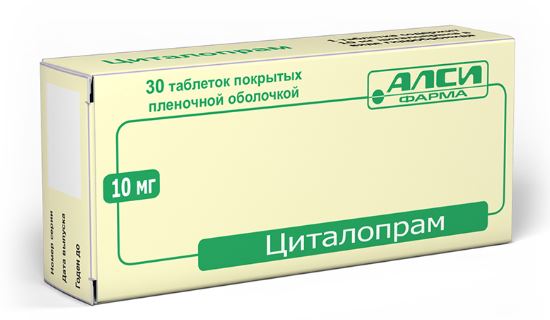
- Drugs to improve blood circulation in the brain - Vinpocetine, Cavinton.
- Vitamin preparations with microelements – “Magnesium B6”, “Neuromultivit”.
- Nootropics – “Piracetam”, “Nootropil”.
Self-medication in this situation is unacceptable. Only soothing teas and mixtures are allowed to be taken without a doctor's prescription. We described above how to provide first aid during VSD crises; further therapy, if necessary, will be prescribed by specialists.
Physiotherapeutic methods
For VSD, physiotherapeutic treatment methods are actively used, which stimulate the activity of all organs and systems, activate blood circulation, and help eliminate tissue hypoxia. Prescribed:
- General and acupressure massage.
- Acupuncture.
- Water procedures - therapeutic baths, contrast or circular showers, underwater shower-massage.
- Darsonval on the head area.

Darsonval on the head area - Electrophoresis.
- Music therapy.
Nutrition
Nutrition correction is of great importance for the treatment and prevention of VSD. You should exclude from the diet foods that provoke increased blood circulation - strong broths, fatty and smoked meat and fish, hot spices and seasonings. The following products should be present on the table daily:
- vegetables;
- cereals;
- fruits;
- fish;
- greenery;
- natural juices;
- milk and fermented milk products.
- olive, pumpkin, flaxseed oil.

Table salt requires restrictions, as it has the ability to retain fluid, therefore increasing blood pressure. Use iodized or sea salt, the daily norm is 3-4 grams.
Pay attention to the drinking regime - the amount of water drunk per day should be 1.5-2 liters. This volume does not include first courses, juices, and milk. Drinking is still water or green tea without sugar.
Folk recipes
Traditional medicine has a large list of recipes to eliminate anxiety, insomnia, fear and other symptoms of VSD. We strongly recommend that you do not trust folk recipes unconditionally - the use of any herbal decoction and collection must be agreed with your doctor. Perhaps you have a chronic pathology for which the chosen methods of alternative treatment are contraindicated.
Without a doctor's prescription, you can use the following for VSD:
- Soothing herbal tea. It is better to buy a collection of herbs ready-made at a pharmacy. Convenient packaging in single bags and the correct ratio of components will save you from mistakes when mixing the collection yourself.
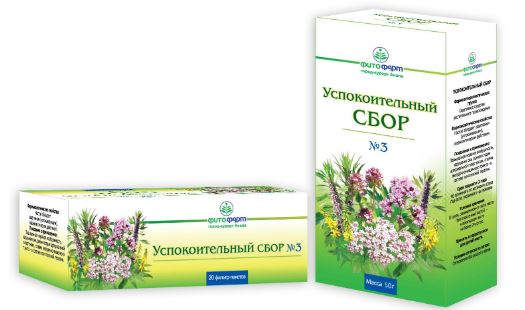
- Hawthorn decoction. Hawthorn berries contain a large amount of potassium, which nourishes the myocardium and improves vascular activity. The easiest way is to add dry berries to the teapot when brewing tea. This will make your tea drinking not only enjoyable, but also very useful.
- Viburnum tincture. Ripe berries are covered with sugar and left in a dark place for 2-3 weeks. The resulting juice is an excellent remedy for the prevention of hypertensive crises.
- Rose hip decoction. A good source of vitamin C. Pour boiling water over the berries and leave for 20 minutes. This infusion can be drunk throughout the day as tea.
More complex herbal preparations are prescribed by a herbalist.
The most important point is the prevention of attacks of VSD. Giving up bad habits, proper regimen, reasonable physical activity, active rest, balanced nutrition, lack of stress - this is the necessary list that will protect you from attacks of VSD. It is very difficult to change your character and learn to react correctly even to annoying moments. But if this is not done, attacks of dystonia will recur and transform into a chronic disease. Take care of yourself, be attentive to alarming symptoms and consult a doctor promptly.
Did you like the article? Save it!
Still have questions? Ask them in the comments! Cardiologist Mariam Harutyunyan will answer them.
Ivan Grekhov
Graduated from the Ural State Medical University with a degree in General Medicine. General practitioner
Let's understand the basic concept
The autonomic nervous system (ANS) is called differently in the medical literature. Visceral, autonomous, organ, ganglion - these are synonyms of the same concept.
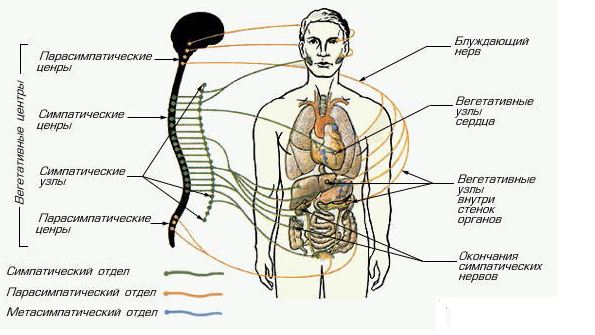
Autonomic nervous system
The ANS regulates the activity of all glands, internal organs, vascular tone, and is responsible for the constancy of the environment of the human body (homeostasis). It is the vegetative nervous system that adapts our body to environmental conditions - climate changes, stress, the change of day and night. It is impossible to independently control the activity of the ANS - a person does not have the ability to “force” the lungs not to breathe or control the contractions of the heart muscle. The autonomic nervous system has three divisions - sympathetic, metasympathetic and parasympathetic. Each of them performs its own functions. With defects in any part of the ANS, signs of VSD (vegetative-vascular dystonia) appear.
Critical days, pregnancy and VSD
Both critical days and pregnancy are characterized by hormonal changes. If a woman is diagnosed with dystonia, it can worsen during menstruation, more often before it. The disease also complicates pregnancy. With the hypertensive type, there is a risk of developing hypertension in pregnant women, the risk of bleeding, and premature placental abruption.
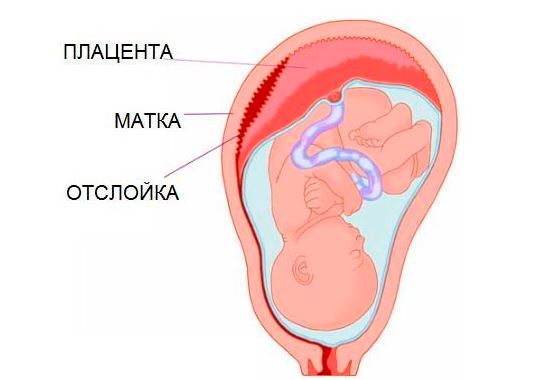
The hypotonic type of VSD provokes fetoplacental insufficiency and anemia of pregnant women. With systematic attacks, fetal hypoxia, body weight deficiency, psychophysical abnormalities, and decreased immunity are possible.
Pregnant women are not prescribed medications, and all therapeutic measures are aimed at normalizing the psychological situation. A woman should adjust her regimen, eat a nutritious and varied diet, spend time outdoors, and avoid stress. In case of systematic attacks of VSD, the patient is hospitalized in the department of pathology of pregnant women to determine and eliminate the causes.
Vegetovascular dystonia symptoms, what kind of disease it is:
Called vegetative-vascular dystonia (V C D):
- Also neurocirculatory dystonia.
- And psychovegetative syndrome.
- And also vegetoneurosis.
- Autonomic function syndrome.
The autonomic system is responsible in the body:
- For body temperature.
- Arterial pressure.
- Heart rate.
- Breath.
- Sweating.
- Metabolic rate.
- Adapts the body to changing weather.
- Physical and mental work.
- Stress.
- The life of people who have this problem is literally like hell, but doctors shrug their shoulders. How can you help yourself, because the worst attacks happen?
Psychotherapy for vegetative-vascular dystonia
VSD therapy involves an integrated approach when, in addition to drug treatment, the patient has the opportunity to work on his problems with a psychotherapist.
As is known, dystonia often manifests various kinds of fears, anxiety, suspiciousness, and sometimes aggression and irritability. Working with a psychotherapist will help you better understand the nature of the origin of these emotions and improve both your physical and mental well-being.
Various techniques are used to work with patients with VSD, the most effective of which are:
- suggestion (suggestion) - influence on the consciousness and psyche of a person with the help of repeating attitudes;
- auto-training - helps calm the nervous system, muscle relaxation and restore mental balance. Differs from hypnosis in that the patient is actively involved in the process;
- Cognitive behavioral psychotherapy - allows patients to identify false attitudes that they considered normal and that caused them fears, discomfort, work through and change them.
